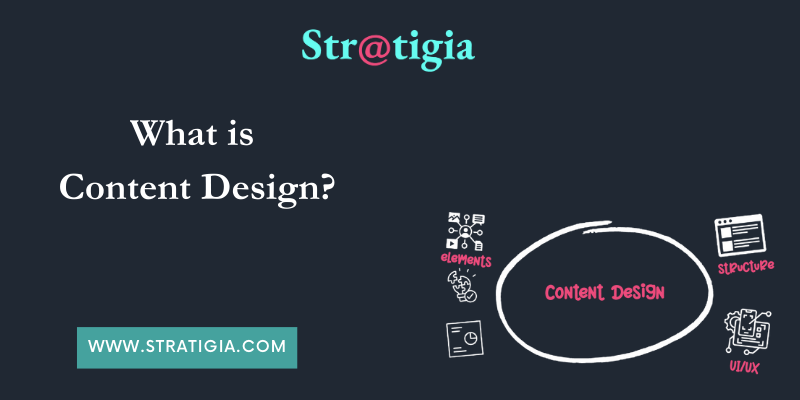Content design is the strategic approach to creating content tailored explicitly to users’ needs and expectations. Coined by Sarah Richards (now Sarah Winters), content design involves determining the most suitable format, language, and structure to convey information effectively. Unlike traditional content writing, content designers carefully consider every piece of content, ensuring it meets specific business goals and aligns with user experiences.
The scope of content design extends beyond just writing. It includes collaboration with visual designers, product managers, and development teams. Effective content designers focus on user journeys, accessibility, readability, and ensuring digital products deliver explicit, compelling content at scale.
The Role of Content Design in User Experience
Content design plays a crucial role in shaping user experiences. At its core, it is about crafting user-centered content that simplifies interaction with digital products—every user interaction—from clicking a button to filling out forms—benefits from thoughtful content design.
For instance, user-focused content guides people seamlessly through a product or service. Clear labeling, straightforward instructions, and relevant information reduce friction, enhancing usability. This improves overall customer satisfaction, ensuring businesses achieve their objectives.
Key Components of Content Design
User Research and Analysis
User research is a fundamental component of the content design process. Successful content designers like Sarah Winters emphasize data-informed decisions and analytical thinking. Techniques such as customer journey mapping, usability testing, card sorting, and gathering feedback ensure that content meets user needs rather than assumptions.
Strategic Content Planning
Strategic thinking underpins effective content design. Content designers collaborate with product teams and strategists to align content with business objectives. By understanding the product design process and strategic goals, designers ensure that all content contributes positively to user journeys.
Collaboration with Design and Development Teams
Content design is inherently collaborative. Content designers regularly work with graphic designers, product managers, and developers to ensure cohesive digital experiences. Establishing strong relationships across teams allows content to integrate seamlessly with visual design and product functionality, enhancing the user-centric products.
Differentiating Content Design from Similar Roles
Content Design vs. UX Writing
While UX writing and content design overlap, UX writing typically focuses more narrowly on microcopy, such as button labels and prompts. Content design, however, addresses broader strategic planning and the overall experience.
Content Design vs. Technical Writing
Technical writers focus on the detailed documentation of technical processes, while content designers create user-focused content aimed at clarity and engagement across the entire product surface.
Content Design vs. Content Strategy
Content strategy involves planning, managing, and maintaining content. Content design, on the other hand, deals specifically with creating individual content elements that align strategically with user and business needs.
Skills Required for Content Designers
User Research Skills
A strong foundation in user research is an essential skill. Content designers must interpret data, conduct user interviews, and apply findings to content creation to ensure relevance and clarity.
Adaptability Across Different Platforms
Content designers must craft content suitable for diverse digital landscapes—from websites and apps to social media. This adaptability requires an understanding of various content guidelines and platform-specific nuances.
SEO and Accessibility Best Practices
Knowledge of SEO and accessibility ensures content reaches a broader audience and provides inclusive experiences. Creating accessible content by incorporating relevant keywords is vital for visibility and usability.
Best Practices in Content Design
Implementing Iterative Feedback Processes
The content design process thrives on feedback loops. Iterative testing with actual users, gathering insights, and refining content continuously improve user satisfaction and engagement.
Ensuring Accessibility and Inclusivity
Inclusive content design considers the diversity of users. Accessibility guidelines, such as appropriate color contrasts and readable typography, must be integral to every design decision.
Aligning Language with Design Principles
Effective content aligns seamlessly with visual and interactive elements, reinforcing the design system components. Language must enhance user experiences rather than distract or confuse.
Impact of Technology on Content Design
Role of AI in Content Design
Generative AI experience and tools have reshaped content design. AI aids in research-driven content creation, automating repetitive tasks, and personalizing content based on user behavior analytics.
Evolving Content Systems in Technology
Dynamic systems and evolving technologies necessitate adaptability in content design. Designers must stay abreast of trends like animated graphics and interactive elements, ensuring relevance and engagement.
How to Succeed as a Content Designer
Building and Showcasing a Strong Portfolio
Content designers must effectively showcase their work through detailed case studies, highlighting their knack for writing and strategic impact.
Networking and Continuing Education
Professional growth requires ongoing learning through industry workshops, certifications, and networking events. Connecting with thought leaders, such as Becky Houlding and Gerry McGovern, expands knowledge and professional opportunities.
Staying Updated with Trends and Industry Innovations
Remaining current with industry trends ensures that designers continuously create relevant, effective content. Regularly reading books about content design, following industry blogs, and engaging with professional communities are critical.
Future of Content Design
Content Design in Dynamic Digital Environments
Content design will increasingly become integral to creating meaningful digital experiences. Designers must prepare for evolving user expectations driven by advancing digital products and shifting customer behavior.
Emerging Trends and Technologies in Content Design
Future content design roles will likely involve a more sophisticated use of analytics, further integration of AI, and innovative user-centered approaches to digital marketing and product development. Understanding these trends will position content designers as pivotal contributors to successful digital experiences.
Conclusion
Content design is more than just creating effective content; it is about deeply understanding user needs, strategic alignment with business goals, and continuous adaptation to technological advancements. By mastering content design principles and staying agile, content designers significantly enhance digital experiences and drive organizational success.




